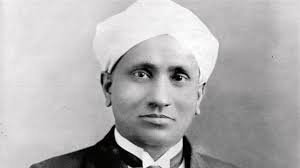C.V. Raman Biography: A Legacy of Scientific Brilliance
Early Life and Education
Chandrasekhara Venkata Raman, widely known as C.V. Raman, was born on November 7, 1888, in Tiruchirapalli, Tamil Nadu. His early education took place in Vishakhapatnam before he pursued a degree in Physics from Presidency College, Chennai. His extraordinary academic performance earned him a gold medal, setting the stage for his groundbreaking research in Physics.
Scientific Contributions and the Discovery of Raman Effect
C.V. Raman made history with the discovery of the Raman Effect in 1928, which describes the scattering of light when passing through a transparent medium. This discovery not only revolutionized the understanding of light scattering but also earned him the Nobel Prize in Physics in 1930, making him the first Indian to receive this prestigious award in science.
Recognition and Awards
Apart from the Nobel Prize, Raman was honored with several prestigious awards, including the Bharat Ratna, India’s highest civilian award, in 1954. He was also a Fellow of the Royal Society and received the Lenin Peace Prize. His research in optics and acoustics continued to influence future scientific advancements.
Legacy and Influence on Indian Science
C.V. Raman played a pivotal role in advancing scientific research in India. He established the Raman Research Institute in Bangalore, where he continued his work until his passing in 1970. His contributions remain a cornerstone of Indian physics, inspiring generations of scientists.

Why This News is Important?
Significance in Competitive Exams
C.V. Raman’s contributions to physics, particularly the Raman Effect, are often featured in government exam syllabi. Questions related to his discovery, awards, and contributions to Indian science are commonly asked in exams like UPSC, SSC, and Railway Recruitment Board exams.
Inspiration for Future Scientists
His journey from a small town in Tamil Nadu to becoming a Nobel Laureate serves as an inspiration to young scientists and aspirants in the fields of physics and research. His life demonstrates the power of dedication and innovation in scientific exploration.
Role in India’s Scientific Growth
Raman’s contributions laid the foundation for India’s scientific research institutes. His work led to advancements in optical physics, which play a significant role in current technological developments such as fiber optics and spectroscopy.
Historical Context: Contributions and Recognition
The Nobel Prize and its Significance
In 1930, C.V. Raman was awarded the Nobel Prize in Physics for his discovery of the Raman Effect. This was a significant milestone in Indian science, as he became the first Asian and first non-white scientist to receive the award in the field of physics.
Impact on Indian Scientific Development
Post-independence, Raman’s research institutes played a crucial role in advancing scientific studies in India. The Raman Research Institute continues to be an essential center for research in physics and engineering.
The Raman Effect and National Science Day
The discovery of the Raman Effect is celebrated every year on February 28 as National Science Day in India. This day honors his achievements and promotes awareness of the importance of science and innovation.
Key Takeaways from C.V. Raman’s Biography
| S. No | Key Takeaway |
|---|---|
| 1 | C.V. Raman discovered the Raman Effect in 1928, explaining the scattering of light. |
| 2 | He was awarded the Nobel Prize in Physics in 1930, becoming the first Indian Nobel laureate in science. |
| 3 | He was honored with the Bharat Ratna in 1954 for his contributions to Indian science. |
| 4 | The Raman Research Institute, founded by him, remains a hub for physics research in India. |
| 5 | National Science Day is celebrated on February 28 every year to commemorate his discovery. |
Important FAQs for Students from this News
1. What is the Raman Effect?
The Raman Effect is the phenomenon of light scattering discovered by C.V. Raman, which explains the change in wavelength of light when it passes through a transparent medium.
2. Why is C.V. Raman important for competitive exams?
His contributions to physics, including the Raman Effect and his Nobel Prize win, are frequently asked in general science sections of exams like UPSC, SSC, and Banking exams.
3. What are some awards received by C.V. Raman?
C.V. Raman received the Nobel Prize in Physics (1930), the Bharat Ratna (1954), and the Lenin Peace Prize, among others.
4. What is National Science Day?
National Science Day, observed on February 28 every year, marks the discovery of the Raman Effect and promotes scientific awareness in India.
5. Where is the Raman Research Institute located?
The Raman Research Institute is located in Bangalore, Karnataka, and continues to contribute to scientific research in physics.
Some Important Current Affairs Links


















 Exciting News!
Exciting News!  Join Our Telegram Channel Now!
Join Our Telegram Channel Now!
 Join our Telegram channel for a thrilling adventure into the world of daily current affairs.
Join our Telegram channel for a thrilling adventure into the world of daily current affairs. 
 Don’t miss out on the latest updates and insights! Click to join now and be part of the knowledge revolution!
Don’t miss out on the latest updates and insights! Click to join now and be part of the knowledge revolution! 
